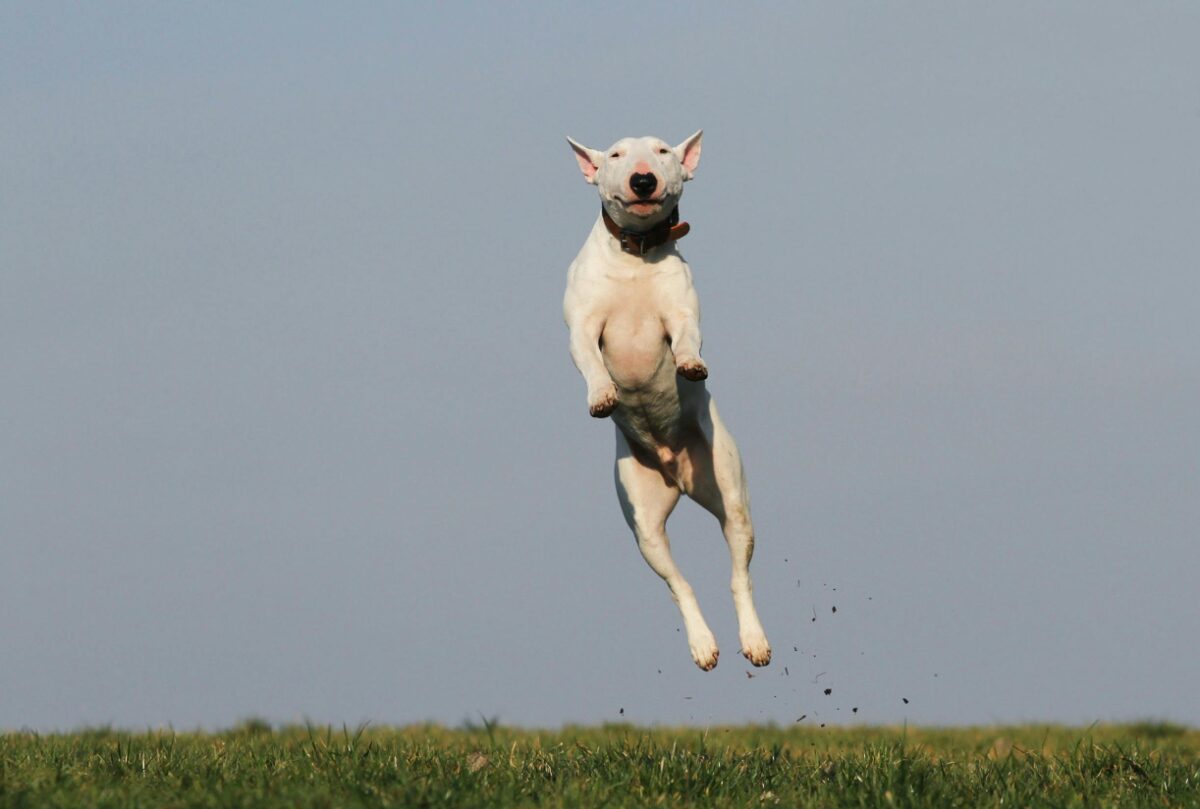It’s a classic scenario: the doorbell rings, and your dog — full of excitement — rushes to the door, jumping up on your guests to say hello. While it might be cute when your dog is small or young, jumping can quickly become annoying, unsafe, and even intimidating to visitors. Teaching your dog to greet people calmly is not just good manners — it’s essential for creating a welcoming home environment.
In this article, you’ll learn why dogs jump, how to prevent it effectively, and which training techniques work best for building polite, four-on-the-floor greetings.
Why dogs jump on people
Jumping up is a natural canine behavior, especially for puppies. Dogs often jump because:
- They want attention and excitement
- They’re trying to reach a person’s face (a natural social behavior)
- They have excess energy with no clear outlet
- They’ve been unintentionally rewarded for jumping in the past
Even if you scold your dog after they jump, you’re still giving them attention — which can reinforce the behavior.
Understanding that jumping is usually an enthusiastic, friendly behavior — not dominance or defiance — helps you address it with patience and positive training.
Set clear expectations
Before you start training, decide what behavior you want instead of jumping. Options include:
- Sitting politely when guests arrive
- Standing calmly with four paws on the ground
- Going to a specific spot or mat when the doorbell rings
Having a clear goal helps you be consistent and gives your dog a clear, positive alternative to jumping.
Train an incompatible behavior
One of the most effective training strategies is to teach an incompatible behavior — an action your dog can’t do while jumping.
For example:
- Sit: A dog can’t sit and jump at the same time
- Go to mat: A dog can’t jump if they’re lying on their mat
Train these behaviors during calm times first, using treats and praise. Once your dog reliably performs the behavior, start adding mild distractions, then bigger distractions like people coming into the house.
Practice calm greetings
To prevent jumping, teach your dog that calm behavior leads to attention, while jumping leads to no interaction.
Steps to practice:
- Set up a greeting scenario with a family member or friend.
- If your dog jumps, the person should immediately turn away and avoid eye contact, speaking, or touching.
- When the dog has all four paws on the ground (even briefly), reward them with praise, petting, or a treat.
- Repeat until your dog starts offering calm behavior as the default.
Be consistent: no reward for jumping, immediate reward for calmness.
Manage the environment
While training is essential, management can help prevent unwanted jumping while your dog is still learning.
Useful strategies:
- Keep your dog on a leash when guests arrive to maintain control.
- Use a baby gate to create a temporary barrier at the entrance.
- Have your dog go to a designated place (like a mat or crate) during greetings.
- Give your dog a chew toy or treat-dispensing toy to keep them occupied.
Managing the situation reduces rehearsal of bad habits and gives your dog a better chance to succeed.
Teach guests how to behave
Your training will only work if your guests cooperate. Before visitors arrive, explain:
- Not to encourage jumping (even by laughing or speaking excitedly)
- To turn away or step back if the dog jumps
- To reward calm behavior with gentle greetings
- To stay calm and avoid getting the dog overly excited
Most guests will happily help if you explain that it’s part of training and ensures a better experience for everyone.
Be patient and realistic
Jumping is a self-rewarding behavior for dogs. That means it can take time and repetition to fully eliminate it, especially if your dog has been jumping for years.
Expect ups and downs:
- Celebrate small improvements (even shorter jumps or delayed jumping)
- Stay consistent — every person must follow the same rules
- Keep training sessions short and positive
- Don’t punish jumping — simply remove attention and redirect behavior
Over time, your dog will learn that keeping four paws on the ground is the fastest way to get what they want: attention and love.
Special considerations for puppies
Puppies jump even more because they’re naturally curious and energetic. The same training principles apply, but be especially patient.
Tips for puppies:
- Reward sits heavily during greetings
- Teach “off” gently if they put their paws up
- Avoid roughhousing games that encourage jumping
- Socialize your puppy to lots of people in a controlled way
Setting expectations early prevents bad habits from becoming adult problems.
What to do if your dog gets overly excited
Some dogs are so thrilled to see guests that they lose all control. If your dog gets overwhelmed:
- Increase distance from the guest
- Let your dog calm down before trying another greeting
- Use a leash to help guide your dog into a sit or down
- Give your dog a brief break in another room if needed
Managing excitement is key. Sometimes the best way to teach calmness is to lower the excitement level first.
A polite dog makes a happy home
Teaching your dog not to jump on guests isn’t just about avoiding muddy paw prints or scratches — it’s about building a respectful, confident dog who knows how to greet people appropriately.
Through patient training, consistent management, and positive reinforcement, you can help your dog learn that calm greetings lead to good things. In return, you’ll create a home that’s welcoming for everyone — guests, family, and your happy, well-mannered dog.

